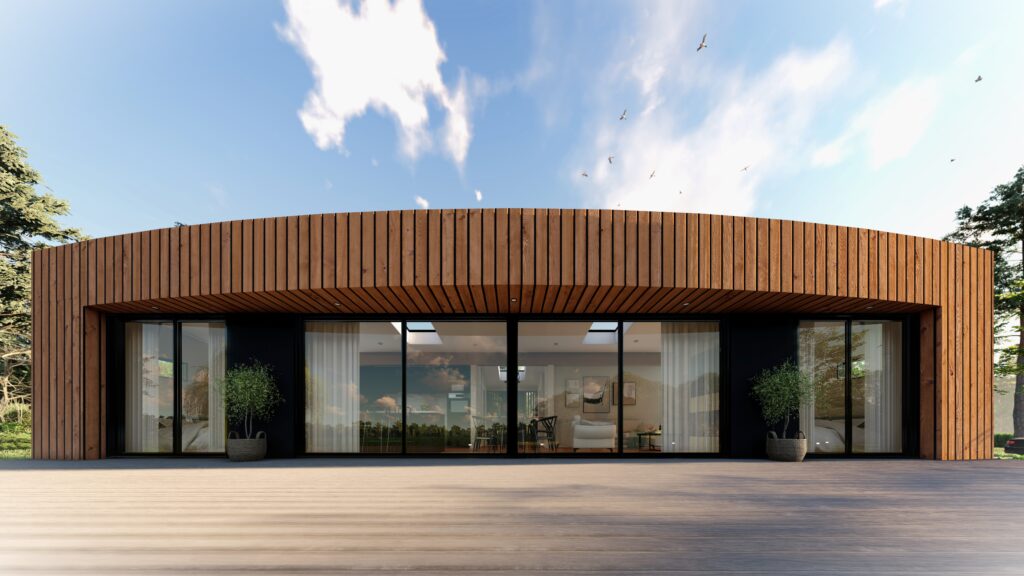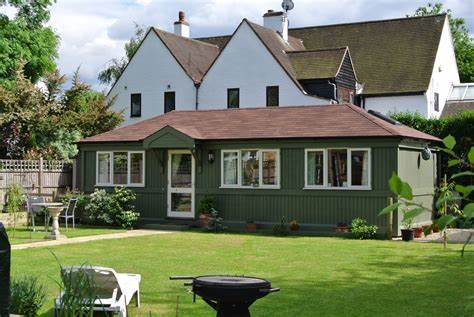How to get planning permission for your annexe
In this blog, we explain some common myths and misconceptions about granny annexe planning in the UK and what you can and cannot use your annexe for. We’ll help you understand the common misconceptions about the planning process, so you can make a successful planning application and get planning permission for your annexe.
Granny annexes, annexes and garden rooms are an increasingly popular option for multi-generational living in the UK. Both for families wanting to move their elderly loved ones closer to them, but also for older children returning from University who can’t yet afford to get on the housing ladder. However, there are a few common misconceptions that can hold people back from exploring this possibility.
How to get planning permission for your annexe – Busting Myths #1 -#6
Myth #1: Granny annexes can only be used by a granny or elderly relative.
While granny annexes are a great way to provide care and support for older family members, they’re not limited to this purpose. They can be used for adult children returning home, teenagers needing more independence, or even as additional living space for visiting friends and family. Provided that the use of the annexe is clearly ancillary to the main dwellinghouse (i.e. shares a clear functional relationship), an annexe can be used for a variety of purposes.
Myth #2: Granny annexes are self-contained and so are separate dwellings.
Annexes by nature typically contain primary living facilities such as a bedroom, kitchen, or bathroom. Whilst this does provide a degree of being self-contained, annexes are considered to be extensions of the main dwellinghouse, albeit detached. Granny annexes typically share some aspects with the main house, such as services and utilities (water, electricity, etc). Provided they are ancillary and are not used as standalone units that share no functional relationship with the main dwelling, annexes may still contain primary living facilities.
Myth #3: Granny annexes do not require planning permission or can be built under Permitted Development Rights.
In many cases, incidental garden outbuildings (such as garages, sheds, or garden rooms) can be built under Class E Permitted Development. Provided they meet set criteria and the site benefits from Permitted Development Rights. However, as annexes are considered to go beyond a use that is incidental to the enjoyment of the dwellinghouse, and are instead ancillary outbuildings, they do not benefit from Permitted Development Rights. Therefore, annexes usually require some form consent from the local council.
Myth #4: Granny annexes must occupy no more than 50% of the available garden space.
The 50% rule usually applies to garden buildings built under Permitted Development. As annexes are ancillary outbuildings and so do not qualify for Permitted Development, the 50% rule does not apply. You can in theory apply for planning permission for any sized annexe, but they must be ancillary and subordinate to the main dwelling. This means the annexe should be smaller in size and scale than the main dwelling and not compete in terms of its level of facilities. It is important to remember that each case is judged on individual merit by the local planning authority.
Myth #5: Granny annexes can be rented out.
Annexes must share a functional relationship with the house (such as occupied by a family member). If an annexe is rented out, especially by occupants who do not share any relationship with the occupants of the main dwelling, this would go beyond the ancillary use that the annexe has been approved for and would be equivalent to creating a new dwelling. The creation of new dwellings in existing residential land is generally resisted, due to site layouts and the intensified development of land, causing an impact on the surrounding area. Annexes can therefore not be rented out as separate units of accommodation.
Myth #6: Granny annexes can be located anywhere within the garden.
Whilst it is true that in theory, you can apply for planning permission for an annexe anywhere within your land ownership, annexes must be ancillary to an existing dwelling and share a clear functional relationship. Therefore, if the annexe is located a considerable distance away from the main dwelling, this will weaken the functional relationship and may give the local planning authority concerns that the annexe will not be used as an ancillary unit and would be tantamount to the creation of a new dwelling. Therefore, as a rule of thumb, we always advise that annexes should ideally be as sited as close to the house as possible, and not of a distance or location that would render it capable of being used as a separate unit.
By busting these common myths and misconceptions, you can make an informed decision about whether a granny annexe is the right option for you. And make a successful application to ensure you get the annexe planning permission you need. Granny annexes offer a fantastic way to provide increased living space and support for loved ones, while still offering them a degree of independence.
Tel: 08002461252 Email: hello@landscapeliving.co.uk





